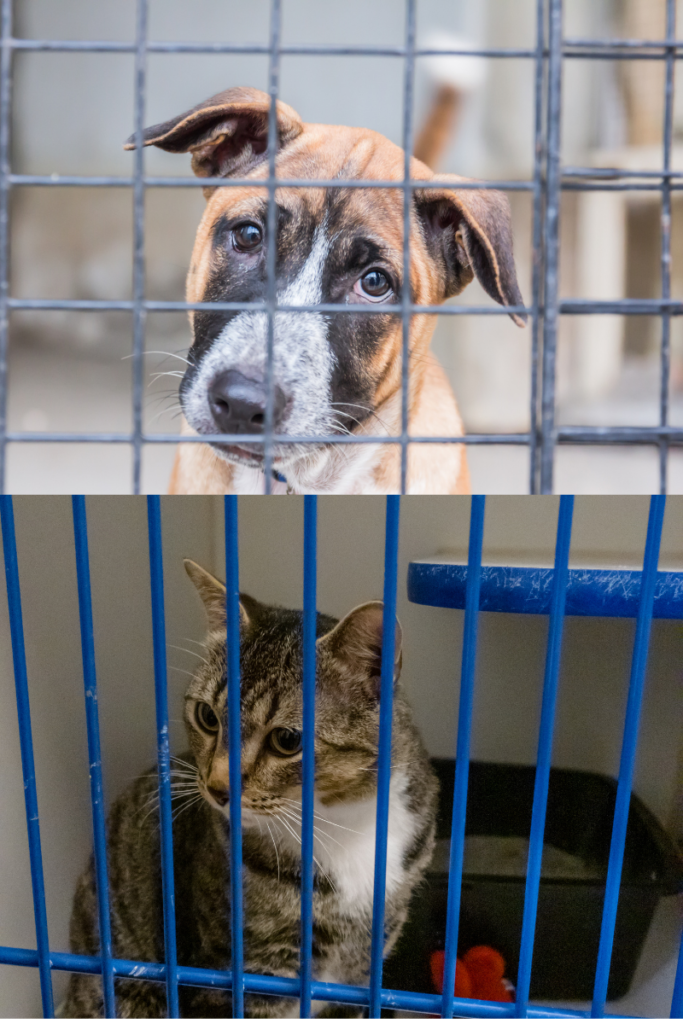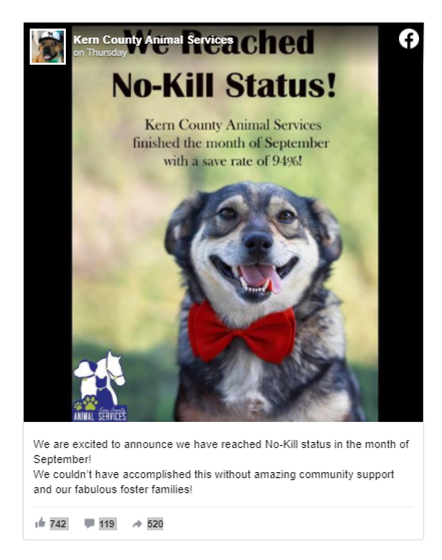
Human at home: Day 37 of lock-down. I am so alone. My family lives far away and I can’t leave the house for anything other than food. I try to keep my spirits up but I all I want to do is just stay in bed and sleep. I no longer have the desire to get out of bed, eat or even exercise to stay healthy. I am not sure how much longer I can take this.
Pet: Day 37 of captivity. I am so alone. Where is my family? Why haven’t they come to get me? I only leave this cage when the nice workers clean my cage or let me play. I try to keep my spirits up but I all I want to do is just stay in bed and sleep. I no longer have the desire to get out of bed, eat or even play. I am not sure how much longer I can take this.
These were many of the thoughts of people and quite possibly some animals that were under lock-down at the beginning of the spread of the Coronavirus. People were told to stay-at-home to slow the spread of this disease and only truly essential needs were allowed. Businesses were shut down and people were stuck at home, many times locked away from family and friends and support networks. Many people began to get depressed and over the course of the pandemic, unfortunately, there has been a rise in depression and suicidal rates (CDC, 2020).
At the same time, animal shelters were shuttered as agencies tried to figure out how to safely continue the business of saving the lives of homeless pets throughout the country (Whitten, 2020). Although we truly do not know how pets in lock down felt with minimal human interaction, there is some evidence that pets that do not receive normal human interaction can become anxious and depressed (Harris, 2011, & Siracusa, 2017). Shelter workers know that animals need to be out of a shelter and in permanent homes. The key to making this happen was how to connect pets with adopters, fosters and reunite them with their lost owners safely during a pandemic.
Shelters had to get creative in order to adhere to social distancing guidelines set by states and local authorities. Marketing communication plays a key role in helping save the lives of homeless pets during this time. According to Berger (2013), the more that an agency, brand, or idea can become a social currency, connect with the audience through stories and emotion, the better chance that the subject matter will go viral. One such animal agency did just that and was able to motivate their community to help them save lives and reach no-kill status for the first-time ever, and during a pandemic no less.

Kern County Animal Services has sadly been known for its high euthanasia rates for years, in fact at one point their euthanasia rate was one of the highest in the nation (Hewerdine, 2020). This past September the organization was able to achieve its first no-kill status as a shelter when they hit a 94% save rate – meaning 94% of all animals had live outcomes for the three shelter locations they oversee (Hewerdine, 2020).
How did they achieve such a feat during a time when people are expected to follow social distancing guidelines? They turned to social media with their unique way of connecting with their audience of pet lovers. Kern County Animal Services came up with new and innovative ways to find permanent adoptive homes or foster homes for pets in their care, thus creating an idea that people wanted to share that was new, fresh, and remarkable, in other words social currency (Berger, 2013). One of the first things that the agency did was create a drive-thru foster event for emergency foster homes that were needed for pets remaining in their care in their shelters during the COVID-19 shut down (Shepard, 2020). The idea was something that the agency had never tried before and the response from the community was overwhelming as a total of 88 animals found temporary homes to ride out the pandemic over several events (Shepard, 2020). The idea connected with people who were also feeling scared and alone and was something that quickly went viral as the story was featured on People.com (Rice, 2020). Soon after the drive-thru events, the shelter was able to reach an incredible milestone; emptying the shelter as most of the animals in their care were in foster homes.
Although the drive-thru fostering events were incredibly successful and helpful, it would not be enough to get more animals into temporary or permanent homes and out of the shelter to save their lives. Kern County Animal Services started hosting virtual adoption/foster events live on Facebook.
https://www.facebook.com/KernCountyAnimalServices/videos/615634045737939/
This gave them an opportunity to connect directly with pet lovers in real time and help place pets in homes. These successful events began in July and continued monthly as they encouraged their fans on social media to follow the live updates and help share the broadcast with friends and family (Roney, 2020). By taking the time to showcase individual pets and talk about their personalities, they were helping the community to see the pets in a different way (social currency) and connecting with them on an emotional level (emotion) through the art of storytelling (stories); another reason many of the videos went viral (Berger, 2013).
In order to save as many lives as possible, this shelter has figured out a way to capitalize on stories, emotion and what is relevant, remarkable and unique to be able to use word-of-mouth advertising to get their community motivated during a pandemic to adopt or foster pets that otherwise may have withered in a kennel until they were euthanized. Marketing communications are an important part of advertising for any organization whether you are selling a soft drink or helping a shelter pet find a new lease on life.
References
Berger, J. (2013). Contagious: Why things catch on. New York, NY: Simon & Schuster Paperbacks
CDC. (2020). Mental health, substance use, and suicidal ideation during the COVID-19 pandemic – United States, June 24-30, 2020. Retrieved from https://www.cdc.gov/mmwr/volumes/69/wr/mm6932a1.htm
Harris, M. (2011, March 9). Dogs left alone for long hours at risk of depression: report. National Post. Retrieved from https://nationalpost.com/news/dogs-left-alone-for-long-hours-at-risk-of-depression-report/#:~:text=But%20in%20one%20of%20the,distress%2C%20depression%20and%20separation%20anxiety.
Hewerdine, M. (2020, October 2). Kern County Animal Services Director discusses reaching no-kill status milestone. Turnto23.com. Retrieved from https://www.turnto23.com/news/local-news/kern-county-animal-services-reaches-no-kill-status
Roney, E. (2020, August 7). Kern County Animal Services adapting to virtual adoptions. Bakerfield.com. Retrieved from https://bakersfieldnow.com/news/local/kern-county-animal-services-adapting-to-virtual-adoptions
Rice, N. (2020, March 19). California shelter ‘Floored by big response to drive-thru pet fostering event amid coronavirus. People.com. Retrieved from https://people.com/pets/california-shelter-drive-thru-pet-fostering-coronavirus/
Shepard, S. (2020, March 18). County animal shelter ‘floored’ by response to foster drive-thru. Bakersfield.com. Retrieved from https://www.bakersfield.com/news/county-animal-shelter-floored-by-response-to-foster-drive-thru/article_3a08ab94-6955-11ea-8b97-cf8b05b472c7.html
Siracusa, C. (2017, March 8). Do humans and pets really benefit from their special bond? The Philadelphia Inquirer. Retrieved from https://www.inquirer.com/philly/blogs/healthy_kids/Do-humans-and-pets-really-benefit-from-their-special-bond.html
Whitten, S. (2020, April 11). Animal rescues are going to need more help than ever once coronavirus restrictions are lifted. CNBC. Retrieved from https://www.cnbc.com/2020/04/11/coronavirus-increased-pet-adoptions-now-rescuers-face-new-challenges.html

3 Responses to Marketing to Save Fido & Fluffy During a Pandemic